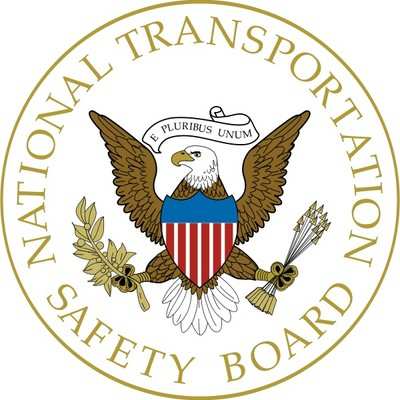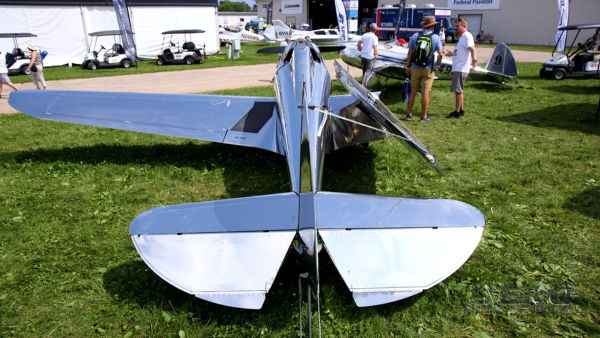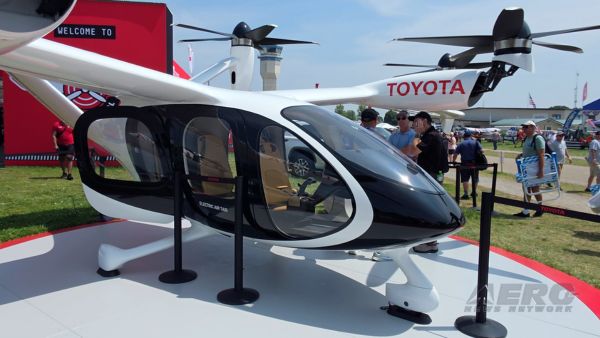Shortly After Rotation, The Airplane Began To Roll To The Left, And The Roll Continued...
Location: Zeeland, MI Accident Number: ERA25FA248
Date & Time: June 29, 2025, 10:49 Local Registration: N360RF
Aircraft: Robert Fidler Lancair 320/360 Injuries: 1 Fatal
Flight Conducted Under: Part 91: General aviation - Personal

On June 29, 2025, at 10:49 eastern daylight time, an experimental, amateur-built Lancair 360, N360RF, was destroyed when it was involved in an accident near Zeeland, Michigan. The private pilot was fatally injured. The airplane was operated as a Title 14 Code of Federal Regulations Part 91 personal flight.
According to a witness, the pilot taxied to the fuel service station and added fuel to the airplane just prior to the accident flight. After fueling, the airplane was seen taking off from runway 20. Shortly after rotation, the airplane began to roll to the left, and the roll continued until the airplane was in a steep bank angle. Subsequently, the nose pitched down, and the airplane impacted terrain to the east of the runway; a postaccident fire ensued.
The initial impact point was approximately 100 ft east of the runway centerline. A crater that was approximately 12 ft from the initial impact point contained the propeller, starter ring gear support, and multiple pieces of plexiglass and composite material. The main wreckage location was about 40 ft from the initial impact point and contained the engine, cockpit, fuselage, both wings, and the empennage. A post-impact fire consumed most of the airframe, and the engine displayed heavy thermal damage. All of the major airplane components were located at the accident site.
The airframe was mostly consumed by the post-impact fire, and displayed impact damage signatures. Flight control continuity for the rudder was established from the rudder bellcrank to the rudder pedal attach brackets for both the left and right rudder controls. One of the left rudder cables was noted to have an unsecured Nicopress compression sleeve. At the time of the examination, the compression sleeve was approximately 5 inches from the rudder pedal attach bracket for the left rudder cable. The compression sleeve showed no signs of being compressed to secure it to the rudder cable.
The right aileron remained attached to its installation point and was thermally damaged. The right aileron control tube that attached the aileron to the bellcrank remained intact and was secured to both the aileron and the bellcrank. The right aileron bellcrank remained intact and was capable of normal movement. The control tube that attached the aileron bellcrank to the idler bellcrank was thermally damaged at the idler bellcrank; however, the rod end remained attached to the idler bellcrank and the bolt, washer, and nut remained secured to the rod end. The right idler bellcrank was thermally damaged and was partially melted. The control tube going from the idler bellcrank to the controls in the cockpit was thermally damaged and was mostly destroyed. The rod end that was attached to the idler bellcrank was located near the idler bellcrank location, and the bolt, washer, and nut remained secured to the rod end. The control tube rod end that was attached to the cockpit controls remained secured to its
installation point.
The left aileron remained attached to its installation point and was thermally damaged. All the aluminum portions of the left aileron control tubes and bellcranks were thermally destroyed; however, all of the control tube rod ends remained. The left aileron control tube rod end that attached to the aileron remained secured to the aileron, and the control tube rod end that attached to the cockpit controls remained secured to its installation point. The other four rod ends were located at their respective destroyed bellcrank locations, and each rod end still contained the attaching bolt, washer and nut.
Both elevators remained attached to the elevator bellcrank and displayed thermal damage signatures. The elevator control rod going from the elevator bellcrank to the idler bellcrank remained attached to the elevator bellcrank, the control tube was thermally damaged near the idler bellcrank and was melted; however, the elevator control tube rod end was located and contained the bolt, washer, and nut. The idler bellcrank was destroyed by the postaccident fire and only the support remained. The elevator control tube going from the idler bellcrank to the control sticks torque tube was completely melted except for the two rod ends. The rod end that was attached to the idler bellcrank was found near the idler bellcrank support and the rod end bolt, washer, and nut remained secure. The other rod end for the elevator control tube remained secured to the control torque tube.
Both flaps were thermally damaged, the attachment hinges were melted, and the flaps were separated from the airframe, being found adjacent to their original installation points. The flap torque tube was thermally damaged, and the flap actuator bellcrank was destroyed. Both flap actuating rods remained attached to the torque tube, and the other ends still had the bolts and nutplates attached to the rod ends.
The engine remained attached to the airframe through its mounts, cables, wires, and hoses. The engine was thermally damaged from the postaccident fire. The crankcase was intact, and there were no visible signs of a catastrophic internal engine failure. The propeller flange was impact-separated from the rest of the crankshaft and remained attached to the propeller. The top spark plugs were removed and the electrodes displayed normal wear and operating signatures.
The propeller was located in the crater near the initial impact point and was mostly buried in the soil. Both propeller blades remained within the propeller hub and could not be moved. The propeller blades were marked with “A” and “B” for documentation purposes during the postaccident examination. The propeller blade marked “A” displayed leading edge gouging, chordwise scratches, and minor twisting deformation. The propeller blade marked “B” displayed leading edge gouging, chordwise scratches, and minor aft bending and twisting deformation.
The wreckage was retained for further examination.
 ANN's Daily Aero-Term (08.04.25): Wind Shear
ANN's Daily Aero-Term (08.04.25): Wind Shear ANN's Daily Aero-Linx (08.04.25)
ANN's Daily Aero-Linx (08.04.25) ANN FAQ: Contributing To Aero-TV
ANN FAQ: Contributing To Aero-TV NTSB Prelim: Van's Aircraft RV-14
NTSB Prelim: Van's Aircraft RV-14 Classic Aero-TV: Portrait of the Army Aviation Heritage Foundation
Classic Aero-TV: Portrait of the Army Aviation Heritage Foundation



